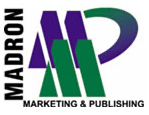It’s out there.
You know that your next big idea is out there…somewhere.
But for right now, the only thing in front of you is a blank computer screen. Or an empty folder. Or a legal pad with a heading that says, “Ideas” at the top…and nothing else.

No matter if you’re trying to come up with a great idea for a headline…a blockbuster new lead for your promotion…or even an idea for a new product, promo package or Facebook ad: the key is that you have to start somewhere.
But how do you get past that initial paralysis?
The key is simple – but most likely unpopular. So many marketers and copywriters struggle with “blockage” at the outset of the campaign…it’s almost as if they like to brag about it.
So many times I’ve heard, “I stared at a blinking cursor for days before I came up with that headline.”
Really? Was that waste of time absolutely necessary?
Here’s the simple reality:
The most effective thing you can do to “jump-start” any creative process is to do something.
Now, I’m not talking about playing ping-pong in a creative lounge or going for coffee with other creative types in the hopes that an idea will jump out at you on the way to pick up your latte.
Instead, I’m talking about research.
Good, old-fashioned, roll-up-the-sleeves research.
So how does this work for marketers looking to finally come up with that next big, blockbuster campaign idea?
Here’s how I did it:
During my days as a financial newsletter publisher – when my primary responsibility was to manage the creative process and help copywriters and marketers create winning promotions – I had a few tricks to help get things kicked off.
These “tricks” were by no means original ideas, but rather I took pride in going to extremes in developing prep materials that were better than anyone else’s.
This included maintaining detailed records of what our competitors were mailing…including what the controls were and what tests were out there (so far as I could tell.) In addition to tracking what the competition was doing, I also made sure I had copies of their promotions so that they could be thoroughly examined by our creative team.
In the print days, this meant updating spreadsheets and maintaining binders with physical copies of mail pieces that were collected by hand. In today’s digital era, this is more easily done – and complete collections can be shared instantly with the click of a mouse.
Another tool I used was the copywriter’s research binder.
Again, putting together a research binder for a copywriter is not a breakthrough idea…heck, it’s not even an original one.
But I noticed that freelance copywriters often weren’t given much to work with in any formal way. Sometimes a folder containing some recent newsletters and maybe the most recent control package would be shipped to the writer…but it always seemed incomplete to me.
So I set about creating the most complete collection I could imagine. Every issue of the newsletter we were promoting…all the bonus reports from the past year…all recent promotional packages – including both winners and losers – were put into a binder.
In addition, I grabbed as many relevant promotions from the competition and included those as well. And I threw in copies of their bonus reports, newsletters and anything else I could find.
I had my assistants take this even further, adding clipped articles about topics relevant to the promotion…or that mentioned ideas that our “guru” also supported or wrote about often.
My intention was to basically overwhelm the copywriter with information. I wanted him to receive a comprehensive, organized and indexed package of material from me that would allow the creative process to begin in earnest.
And that brings me back to the topic of today’s post – how to get started.
The feedback I received on those copywriter’s research binders was overwhelming. In fact, I felt at the time that they helped me actually attract better writers because people knew that we had our act together when it came to assisting the creative process.
On top of that, those materials were tremendously helpful to me and my team as well…when we were brainstorming ideas – or preparing for creative meetings – we had a deep pool of resources to swim around in to help us get started.
Having been on the other side of the desk now – as a freelance writer myself – for more than 20 years I can tell you it’s pretty rare to get blown away with research materials from a client.
But just recently, a client in the health and wellness field did just that, sending me a binder – complete with a table-of-contents – filled with tons of relevant materials…and an email with more than enough links to get me started on idea development.
And that’s the key – whenever you’re “stuck” at the beginning of the creative process, the simple solution is to just dive into the research headfirst.
The more you have available, the better.
As a writer, I like to move back-and-forth from reading relevant creatives (other promotions used by the client as well as the competition) to reading non-promotional material relevant to the subject.
Sometimes this can take just a few hours…and other times it can take days.
I like to examine the promotions that worked well for a given product or industry…and I also like to examine the promotions that bombed so I can try to see what I need to avoid.
But research, research and more research has never failed me as a way of successfully getting the creative process off and running.
In fact, it has helped me turn the creative process from being something that seems like a struggle at first into an intellectual “deep dive” that usually translates directly into a host of big ideas that help me get the project started off on the right foot.

